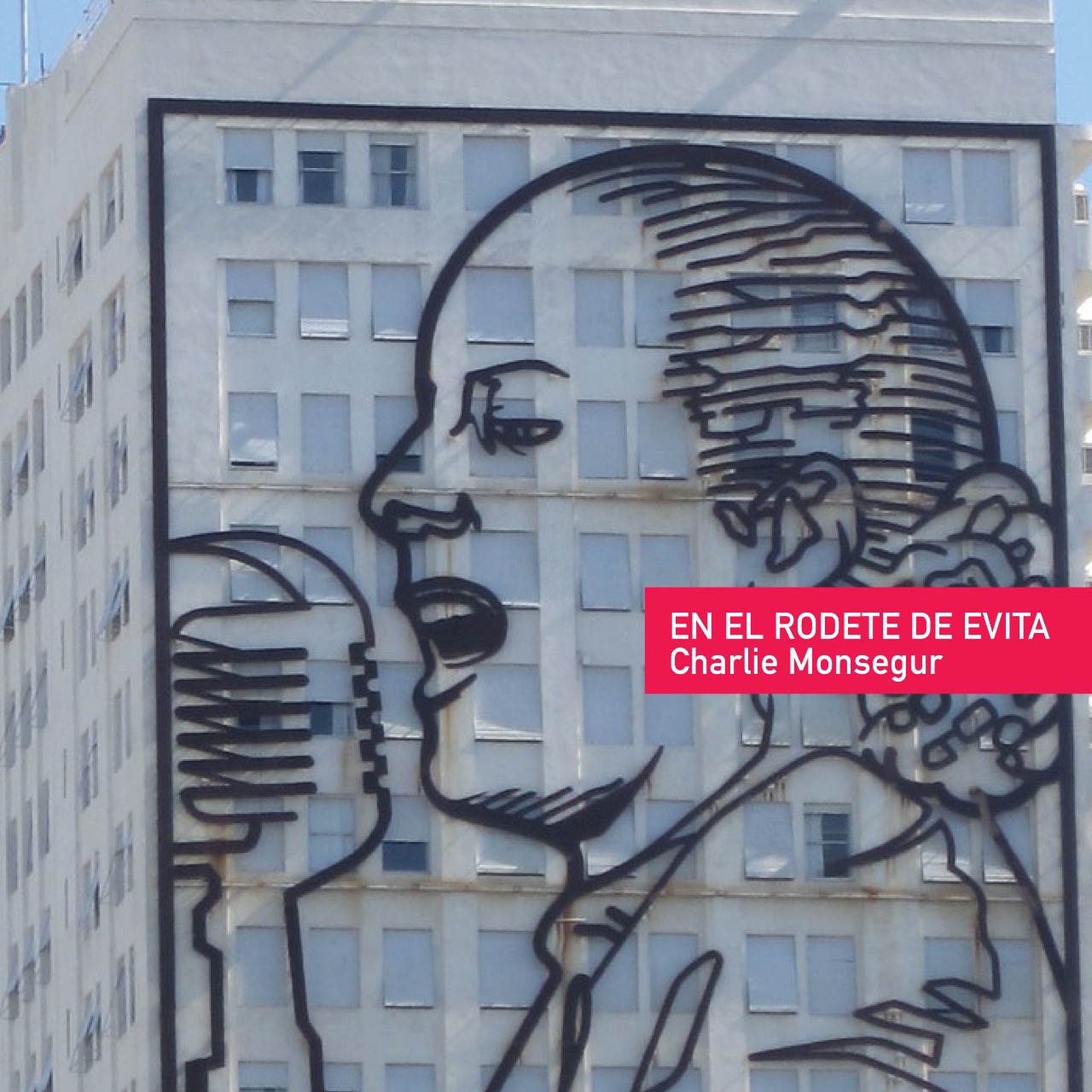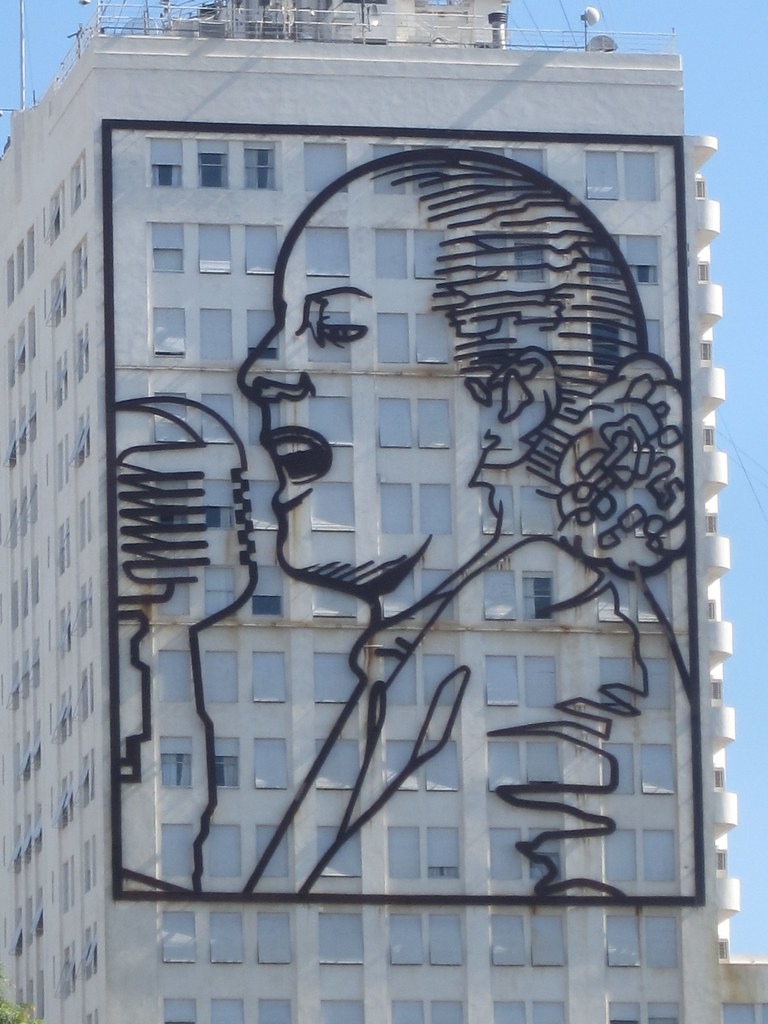
EN EL RODETE DE EVITA
Evita fue siempre una mala palabra en casa.
Era una sombra lejana, una mancha a la que no se le daba importancia ni entidad. Sabía de su paso por la vida de mis padres y de lo que la habían padecido. Pero de eso se evitaba hablar -(advierto aquí la pertinente utilización del verbo).
Recién en mi juventud, a mis veinte años, cuando en la Argentina se jugaba el Mundial de Fútbol 1978 y en plena Dictadura, se estrenaba en Londres el musical que llevaría su nombre, con su célebre tema Don’t Cry For Me Argentina, haciéndola más inmortal aún.
Era obvio que a la Junta Militar el éxito de la obra que se empezaba a escuchar por todo el mundo la incomodaba. Evita se empezaba a visibilizar en mi generación de la que estuvo escondida bajo la alfombra desde el ’55.
Algunos años después, ya en democracia, en 1996 se estrenaba la película Evita, protagonizada por la Pop Star Madonna. Evita se volvió más popular aún y su figura se globalizó otra vez. Yo seguía teniéndola en mi lista de villanos a pesar de toda esta pirotécnia hollywoodense.
Con la llegada de los Kirchner la figura de Evita siguió creciendo entre nosotros, tal vez, logrando la estatura que merecía. Y no porque yo pensara que fuera justo, sino porque había sido escondida por muchos años, quizás porque muchos de esos años fueron de gobiernos militares.
Y con la llegada de los Kirchner la pusieron en el billete de mayor denominación, en el de cien pesos, compartiendo escena con Julio Argentino Roca de igual valor que unos años antes, había compartido cara a cara con el de cien verde de Benjamín Franklin, en tiempos de convertibilidad.
Ese billete de Evita se emitió como conmemoración a los sesenta años de su muerte, en septiembre de 2012 y fue el primer billete argentino en tener como protagonista principal a una mujer. Todos llevábamos ahora a Evita en nuestros bolsillos.
Y fueron los Kirchner también los que decidieron inmortalizarla. Emplazaron dos imágenes gigantescas de Evita en el edificio del ex Ministerio de Obras y Servicios Públicos -hoy Ministerio de Desarrollo Social- sobre la Avenida 9 de Julio, en el corazón de la ciudad, en la avenida más ancha del mundo, para que la vea todo el mundo. Visibilidad al palo.
Dos Evitas. Gigantes.
Confieso que pensé que durarían un par de años, pero siguen allí desde 2011.
Dos Evitas. Distintas. Una que mira al norte y otra que mira al sur.
La que mira al sur me gusta más. Es casi una foto carnet de Evita.
En cambio, la que mira hacia el norte es provocadora, agresiva e irritante. Ella está gritando y encima le grita a un micrófono. ¿Eso no aturde? Y le grita al microcentro. A la city-porteña. A la Patria Financiera. Esta definitivamente no me gusta. Siete toneladas de Evita de treinta y un metros por veinticuatro gritándome. Todos los días. A los del norte.
Pero este enorme mural gigantesco, el del norte, el que me grita, esconde algo.
Y es aquí en donde me quiero detener.
En esta imagen de la Evita, exaltada, gritona y provocadora, Alejandro Marmo, su autor, escondió algo.
Una cifra de cuatro dígitos. Yo la vi. No se si él la vio, pero está en el rodete de Evita. No puede ser un error porque es perfecta. Es en el rodete de Evita donde Marmo escondió una cifra. ¿Apocalíptica? Puede ser que lo sea. Yo la encontré primero en ese caprichoso ovillo de cortes de acero, quizás antes que Marmo. Tal vez a partir de ahora la gente se acerque a descubrirla.
Según el rodete de Evita, algo importante nos va a pasar a los argentinos y dentro de muy poco. Dios quiera que sea algo bueno.
////////////////////////////////////////////////////////////////////////////////////////////////////////////////////////////////////////////////////////////////////
INSIDE EVITA’S HAIR BUN
Evita was always a bad word at home.
It was a distant shadow, a stain that was not given importance or entity. He knew about his passage through my parents' lives and what they had suffered. But he avoided talking about that.
Only when I was young, in my twenties, when the 1978 World Cup was being played in Argentina and in the middle of the Dictatorship, the musical that would bear his name premiered in London, with its famous song Don't Cry For Me Argentina, making her even more immortal.
It was obvious that the success of the work that was beginning to be heard around the world bothered the Military Junta. Evita was beginning to become visible in my generation of the one that had been hidden under the carpet since 1955.
Some years later, already in democracy, in 1996 the film Evita was released, starring the Pop Star Madonna. Evita became even more popular and her figure became global again. I still had her on my list of villains despite all this Hollywood pyrotechnics.
With the arrival of the Kirchners, Evita's figure continued to grow among us, perhaps achieving the stature she deserved. And not because I thought it was fair, but because it had been hidden for many years, perhaps because many of those years were under military governments.
The Kirchners placed Evita in the bill with the highest denomination, the one hundred pesos bill, sharing the scenario with Julio Argentino Roca of the same value as a few years before, he had shared face to face with Benjamin Franklin's green hundred, in convertibility times.
That Evita banknote was issued as a commemoration sixty years after her death, in September 2012, and was the first Argentine banknote to have a woman as the main character. We all now carried Evita in our wallets.
And it was the Kirchners again who decided to immortalize her. They placed two gigantic images of Evita in the building of the former Ministry of Works and Public Services -today the Ministry of Social Development- on Avenida 9 de Julio, in the heart of the city, on the widest avenue in the world, for all the world to see. Visibility to the most.
Two gigantic Evitas. Two.
I confess that I thought they would last a couple of years, but they have been there since 2011.
Two Evitas. Different. One facing north and one facing south.
I like the one facing south better. It's almost a passport photo of Evita.
On the other hand, the one facing north is provocative, aggressive and irritating. She is screaming and on top of that she is yelling into a microphone. Doesn't that stun? And she yells to the city-porteña. To the Financial District. I definitely don't like this image. Seven tons of thirty-one meter by twenty-four meter Evita yelling at me. Every day. To those of the north.
But this huge gigantic mural, the one to the north, the one that yells at me, hides something.
And here is where I want to stop.
In this image of Evita, exalted, loud and provocative, Alejandro Marmo, its author, hid something.
A four digit number. I saw it. I don't know if he saw it, but it's in Evita's hair bun. It can't be a mistake because it's perfect. It is in Evita's bun. Apocalyptic? Maybe. I found it first in that whimsical ball of steel cuts, perhaps even before Marmo. Perhaps from now on people will come in crowded excursions to see it.
According to Evita's hair bun, something important is going to happen to us Argentines and very soon. Let us hope it's a something good.

